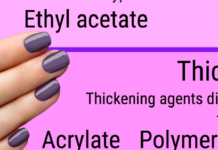It is that time again for Katja Miller, a high school junior and dedicated swimmer for the Clayton Shaw Park (CSP) Tideriders in Missouri, to begin swimming and diving season. She has her new cap, goggles, and, most importantly, a new Lycra swimsuit. A few weeks into the season, she notices that her suit is fading and starting to stretch. The nylon in Lycra suits does not last very long. By the end of the season, Katja, like most competitive swimmers, goes through two or three suits. “I’m ready for a suit that will last,” says Miller.
swimmer for the Clayton Shaw Park (CSP) Tideriders in Missouri, to begin swimming and diving season. She has her new cap, goggles, and, most importantly, a new Lycra swimsuit. A few weeks into the season, she notices that her suit is fading and starting to stretch. The nylon in Lycra suits does not last very long. By the end of the season, Katja, like most competitive swimmers, goes through two or three suits. “I’m ready for a suit that will last,” says Miller.
According to Jennifer Shurmur, a former swimmer and now a swimming parent, swim suits have been made of cotton, wool, nylon, and polyester. These fabrics are thicker and force the swimmer to do more work by pulling more weight, which helps the training.
What these suits lack is comfort. Some swimmers tend to get rashes where the suits rub. Ellie George, a high school freshman and an elite swimmer who has swum for nine years with the CSP Tideriders, says, “I do not buy Speedo Endurance [polyester] suits anymore because they are very tight and irritate my skin.” She now buys Nike nylon suits. “They do not last as long, but they are much more comfortable.”
On the other hand, Etinosa Ogbevoen, another elite swimmer for the Tideriders, says, “If I buy a polyester suit, I expect it to last a long time because I pay so much for it.” She has been swimming for 13 years and is a strong support of these suits. Andrew Fleisher, a member of the Jersey Wahoos’ national swim team in New Jersey agrees. “Speedo Endurance [polyester] suits are the way to go.”
Chlorine is placed in swimming pools because it kills germs and bacteria in the water. According to Environmental Protection Agency, the chlorine in the swimming pools prevents disease. The chlorine in the pool water causes most of the wear and tear, because chlorine “eats away” at the fabric. The most noticeable changes are color changes and the fit. According to the Journal of the Society of Dyers and Colourists, chlorine attacks the elastic part of a fabric that stretches and fades the color of the fabric. Fabrics with little to no elastic will be unaffected or less affected by the chlorine.
Cotton, which is made of mostly cellulose and water, doesn’t tend to stretch, according to Cotton, Inc. Polyester made from polyethylene terephthalate, which is the same chemical found in plastic bottles, also doesn’t tend to stretch. The fabrics that tend to stretch more are wool and nylon.
The newest of Speedo’s practice suits is the chlorine-resistant, polyester Endurance. They tend to fit much tighter than Lycra, but are much more expensive. On the other hand, the colors in these suits also do not fade as easily as with Lycra. According to Speedo, the Endurance suits create a significant amount more drag in the water while the swimmer is training because of the thicker fabric. This means that the swimmer must pull harder to move through the water.
Lycra or nylon suits, on the other hand, are made of a nylon–spandex blend. Less dedicated swimmers tend to buy these suits because they do not need a long-lasting suit, have less drag and are much more comfortable. However, these suits are better for swim competition.
Scientists are developing newer suits that last longer and are comfortable to wear during training. For example, Speedo is making a 100% chlorine proof suit called Endurance Speedo Plus. “These newly developed suits have changed my training and swimming for the better,” says Miller. “They have saved me both time and money because I don’t have to buy suit after suit. I couldn’t imagine training without them.”

This work is licensed under a Creative Commons Attribution-NonCommercial-NoDerivs 3.0 Unported License














This article was very interesting. If I were to ever try out for a swim team or something, now I know what kind of swim suit I should buy.
:smile
Very good article. I like how you got realy swimmer’s advice on what type of swimcuit they prefer.
This is a good essay and i found parts of it quite interesting. My swimsuits often fade or get thin. I used to think that they’d fade from the sun but, i learned that they also probably fade from the chlorine. Good topic!
Parts of this article were quite interesting. My swim suits often fade and get thin so this topic interested me. I thought my suit faded from the sun but, i learned it also fades from chlorine. Great topic!
I was very interested in this article because it talks about how Chlorine leads to the discoloring and misshaping of swimsuits. Since I am writing an article on Chorine, it helped me get more interesting information on the topic.
I swim in the summer for a swim team and this is very helpful so now I can save my money and time looking for suites. So I can aviod rashes and let my swim suite last for a long time.
I really liked this article. I thought it was very interesting learning about the different types of swimsuits and how their composition is affected by the chlorine and how long they last. I really liked how you had multiple opinions on both types. I really enjoyed reading this article! Great Job Erica!!!
This article gives a lot of good information about different types of swim suits. It will help people save time and money on swim suits. Comfort is also a big factor for most people when they are buying a swim suit and this article tells a lot about certain types of suits that do not give rashes while wearing.Overall, I liked this article a lot.
This article gives a good explanation of the science of swimming. Also, the information may come in handy when I am buying my next suit. The pros and cons of each type of suit are thoroughly described in this article. This is a great informational article for anyone interested in swimming.
Great job! I really enjoyed hearing what each swimmer had to say about their suits. Never really imagined there being such differences between the types of suits before reading this. Very well written.
Really well written article. Expresses new information I didn’t know about.
This article makes me think about the harshness of Chlorine on swimsuits and clothing. Very imformative.
This is a really well written article, it explains a lot to me about the different types of material for swim suits.
I really liked your introductory paragraph, it really made you want to read on into the story!
I found this article very interesting, mainly because I used to swim and have the same problems with my suit. It interests me how some people prefer the Cotton, and some the polyester. The Endurance Speedo Plus sounds like a long lasting, comfortable suit!
I really liked this article because it related to a topic that i can relate to. being a swimmer for many years i have run into this problem many times and i was very interested into seeing what was behind this problem of swimsuits. i really enjoyed it !
Very interesting topic and very well written.
Great article! I did not know that swimmers purposely use swim suits that cause resistance in training. But I wonder what is the "plus" in the Endurance Speedo Plus that makes it 100% chlorine proof.
interesting article! i never thought that different types of swimsuits could be so affective to a swimmer.
I like how your lede paragraph grabs my attention which makes me want to read more about this topic. I also like how you added a lot of interviews and opinions about different types of swimsuits. It made your article more interesting. I thought it was very well written. Good job!
Two thumbs up for this article! I certainly knew more about swimming and what type of material is best for swim suits after reading. The quotes were great and the article was easy to understand while being very informative at the same time. :smile
I didn’t know there was so much science behind swimming suits! I found it intersting that the more expensive suits make it harder to swim in water while the less expensive ones are better for competition.
Well done! I found this article to be both insightful and interesting to read. Through this I was able to become more educated on not only the different types of suits competitive swimmers wear, but also the latest advances in race wear. As a person who swims on a summer swim team, I can certainly appreciate this knowledge of the effects of chlorine on different types of suits, and better plan for my next racing suit purchase. :smile
This is a really interesting article! I have definitely been frustrated before with how quickly my suits have worn out. This is good to know!
I love the topic! It really caught my attention. It is unique because I have never read anything about it before. I also like how you worked chemistry into the article and made it easy to understand. :smile
I really like how she has statements from many different swimmers. It really adds to the importance and relevance of the article.
Great job!
this article was very interesting and had great iformation.
Great article. I never knew the swimsuit brand made that much of a difference.
Great explination and topic. I now understand why swimsuit wear.
This article was very interesting for me because I am also a swimmer like Erica. I am now going to start buying Speedo Edurance Plus suits instead of just normal endurance suits. Thanks for the advice!
The article is very informative, because a lot of people swim. This caught my attention because I swim in the summer and wanted to know more about swimming suits.Thank you for informing me on swimming suits, now i know which kind I will buy.
Great article! I learned a lot from it!
You wrote a really great article! This was well researched, thought out and written!
This is a very well written article.I learned new information about why some swimming suits last longer than others and which type you should buy.
Very impressive! Would have never known how the brand effected the sport so much!
this article was very interesting it gave great information and i had no idea that the brand of a swimming suite would impact the way you swim
Nice work! However, paragraph five where it says "chlorine is places in swimming pools because…" Should of course be "chlorine is placed in swimming pools because."
Alaya: Thanks for pointing out the mistake. It is now fixed.http://scijourner.org/components/com_urcomment/emoticon/funny/smiley1.gif
This articke was very interesting . I didnt know that you could get rashes from a swim suit and I thought that all swimsuits were comfortable to me .
great topic but ayee what’s up guys?